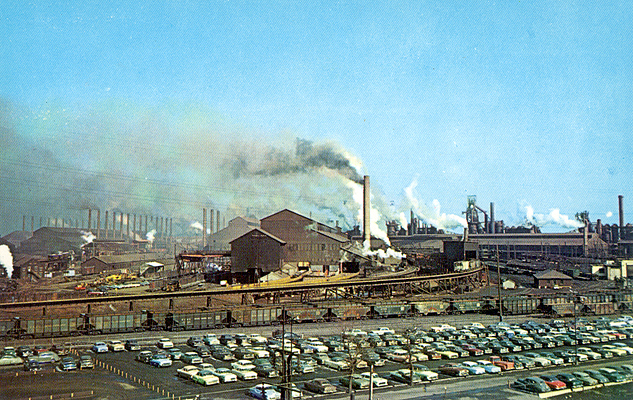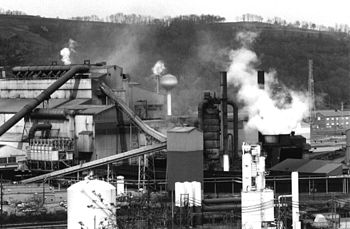Investing in the steel industry has always been a topic of interest for those looking to diversify their portfolios. However, understanding the history, challenges, and current state of the industry is crucial before making any investment decisions.
A Brief History of the Steel Industry
The steel industry emerged in the 19th century, driven by technological advancements and industrialization. Steel quickly became essential for infrastructure, machinery, and transportation. Despite facing challenges, such as economic downturns and global competition, the industry thrived.
Efforts to address environmental concerns have led to sustainable practices and technological innovations. The steel industry remains vital in shaping our modern world and will continue to play a crucial role in our future.
Challenges Faced by Steel Companies in Recent Times
The steel industry has encountered significant challenges in recent years, impacting its profitability and growth potential. Overcapacity caused by global competition has led to pricing pressures and reduced profit margins.
Shifting consumer preferences towards renewable energy have affected the demand for certain steel products used in wind turbines and solar panels. Volatile market conditions, technological advancements, environmental regulations, and attracting skilled workforce further add to the challenges faced by steel companies.
| Challenges Faced by Steel Companies |
|---|
| Overcapacity due to global competition |
| Shifting consumer preferences towards renewable energy |
| Volatile market conditions influenced by geopolitics |
| Technological advancements and automation |
| Compliance with environmental regulations and sustainability standards |
| Attracting and retaining a skilled workforce |
The Current State of the Steel Industry
Despite challenges, the steel industry remains resilient. Ongoing urbanization projects in developing countries and infrastructure revamps in mature economies create a steady demand for steel products. Government policies prioritize domestic manufacturing, offering opportunities for local steel companies.
Technological advancements enhance efficiency, while sustainability initiatives address environmental concerns. Overall, the steel industry is an attractive investment due to its adaptability and consistent demand.
| Factors Driving Demand in Steel Industry |
|---|
| Ongoing urbanization projects |
| Infrastructure revamps in mature economies |
| Government policies prioritizing domestic manufacturing |
| Technological advancements enabling improved efficiency |
| Environmental sustainability initiatives |
Benefits of Investing in the Steel Industry
Steel, as an essential material, offers numerous benefits for investors looking to enter the market. The global demand for steel products remains consistently high across various sectors such as construction, automotive, aerospace, and energy. This consistent demand provides a stable foundation for potential growth and profitability.
One major advantage of investing in the steel industry is the essential role that steel plays in infrastructure development and manufacturing processes. From building bridges and skyscrapers to manufacturing cars and machinery, steel is indispensable.
Its versatility and reliability ensure a consistent need for steel products in both developed and emerging economies.
Moreover, the potential for growth within the steel industry should not be overlooked. While there are challenges to overcome, companies that can effectively navigate market dynamics have the opportunity to thrive. By adopting innovative technologies and optimizing their operations, they can gain a competitive edge over their counterparts.
Investing in the steel industry also allows investors to tap into emerging economies’ rapid urbanization and industrialization. As more countries develop their infrastructure and increase manufacturing activities, the demand for steel products is expected to rise significantly.
This presents an excellent opportunity for investors seeking long-term returns.
Furthermore, investing in steel offers diversification benefits within a well-established industry. By allocating funds into different segments of the sector such as raw materials production or downstream manufacturing, investors can spread their risk while capitalizing on various growth prospects.
Financial Stability and Performance
To thoroughly assess a company’s financial stability and performance, several key factors need to be considered. These include analyzing revenue and profit trends over the past few years, as well as assessing the company’s debt levels and ability to manage financial risks.
Firstly, examining the revenue and profit trends of a company provides valuable insights into its overall financial health. Consistent growth or stability in these areas indicate that the company is effectively managing its operations and generating steady income.
This can be indicative of a strong market position, effective cost management strategies, or successful product offerings. On the other hand, declining revenues or inconsistent profits may raise concerns about the company’s competitiveness or operational efficiency.
Secondly, understanding a company’s debt levels is crucial when evaluating its financial stability. Excessive debt can pose significant risks during economic downturns or periods of market volatility. High debt burdens may lead to difficulties in meeting interest payments or negatively impact cash flow.
Therefore, it is important to assess whether the company has a manageable level of debt that can be serviced without jeopardizing its operations or future growth prospects.
Furthermore, evaluating a company’s ability to manage financial risks is essential for gauging its long-term stability.
This involves considering factors such as diversification of revenue streams, hedging strategies against currency fluctuations or commodity price volatility, as well as any contingent liabilities that could potentially impact the company’s financial standing.
In conclusion, analyzing a company’s financial stability and performance requires an in-depth examination of various factors.
By examining revenue and profit trends over time, assessing debt levels responsibly, and evaluating risk management strategies, investors can gain valuable insights into a company’s overall financial health and make informed decisions regarding their investments.
| Factors to Consider |
|---|
| Revenue and profit trends over the past few years |
Market Position and Competitive Advantage
To thoroughly assess a company’s potential for long-term success, it is crucial to understand its market position and competitive advantage. These factors play a significant role in determining the company’s ability to thrive in a competitive landscape.
Companies that have established themselves as leaders within the industry often possess significant market share. This indicates their dominance and influence over competitors. Moreover, an extensive customer base signifies stability and the capacity to attract and retain clients from diverse backgrounds.
Such companies are better positioned to weather market fluctuations and capitalize on growth opportunities.
Identifying companies that stand out from their competitors due to technological advancements, innovative products or processes, or cost leadership strategies can reveal their competitive advantage. Technological differentiation allows companies to stay ahead of the curve by leveraging cutting-edge tools and systems.
By continuously innovating, these companies can offer unique solutions that meet evolving customer needs. Additionally, cost leadership strategies enable companies to maintain competitive pricing while still delivering high-quality products.
When considering investment opportunities in the steel sector, it is essential to scrutinize each company’s market position and competitive advantage carefully. This analysis will provide valuable insights into their potential for long-term success.
In the following section, we will explore two steel companies worth considering for investment, keeping these factors in mind.
| Company | Market Share | Customer Base | Differentiation |
|---|---|---|---|
| Company A | High | Diverse | Technological Advancements |
| Company B | Moderate | Stable | Innovative Products & Processes |
Note: The table above presents a simplified comparison of two steel companies based on their market share, customer base diversity, and differentiation strategies.
By delving deeper into these aspects of market position and competitive advantage, investors can make informed decisions about which steel stocks are most promising for investment purposes.
Company #2: Steel Dynamics
Steel Dynamics, a prominent player in the steel industry, displays remarkable resilience and innovation. With a focus on operational efficiency and cost management, the Indiana-based company consistently delivers strong financial results.
Its diversified product portfolio, including flat-rolled steel and structural beams, minimizes risk and expands its customer base. The vertically integrated business model grants greater control over costs and quality, positioning them for future growth opportunities.
Steel Dynamics also places a strong emphasis on sustainability and environmental responsibility, reflecting their commitment to reducing their carbon footprint. Thoroughly researching potential investments in the steel industry will help identify companies like Steel Dynamics that demonstrate these essential qualities for long-term success.
| Key Strengths |
|---|
| Operational efficiency and cost management |
| Diversified product portfolio |
| Vertically integrated business model |
| Commitment to sustainability and the environment |
Remember to conduct thorough due diligence before making any investment decisions as investing in any industry comes with risks.
Potential Drivers for Future Growth in the Steel Industry
Infrastructure development projects and economic growth in emerging markets are crucial drivers for the steel industry’s future growth. Governments worldwide prioritize infrastructure improvements, creating a significant demand for steel products in projects such as bridges, highways, railways, and buildings.
Simultaneously, emerging economies’ expansion leads to increased construction and manufacturing activities that rely on steel. Technological advancements, environmental regulations promoting sustainability, and collaborations with other sectors also contribute to the industry’s potential growth.
With these factors in play, the steel industry is well-positioned to capitalize on opportunities and continue its upward trajectory.
[lyte id=’xGnCUIwPY0k’]




.jpg/120px-Steel_Manufacturers_(Zob_Bris_Co.).jpg)


